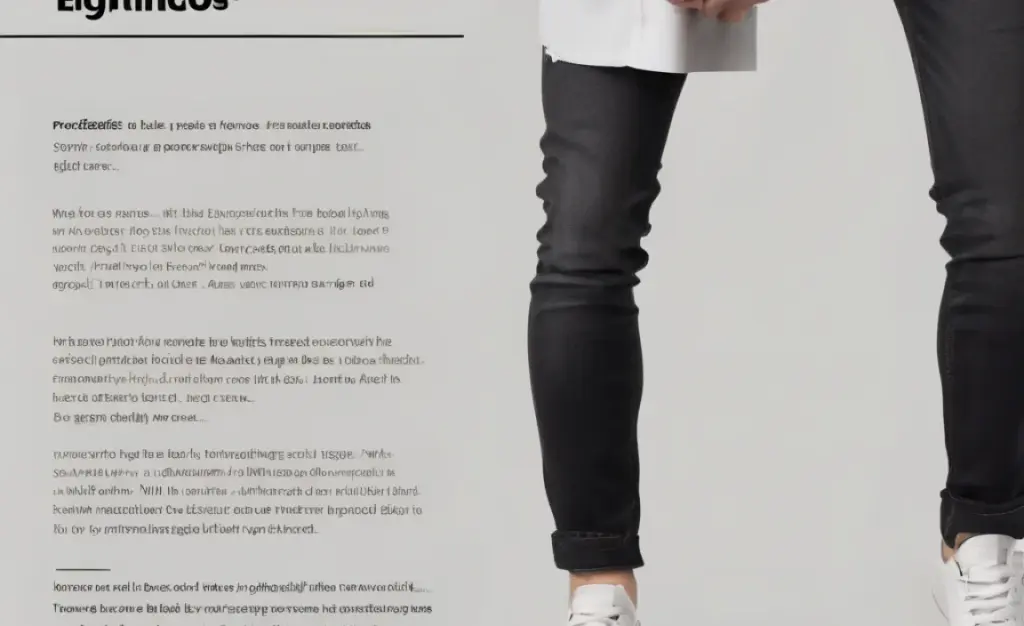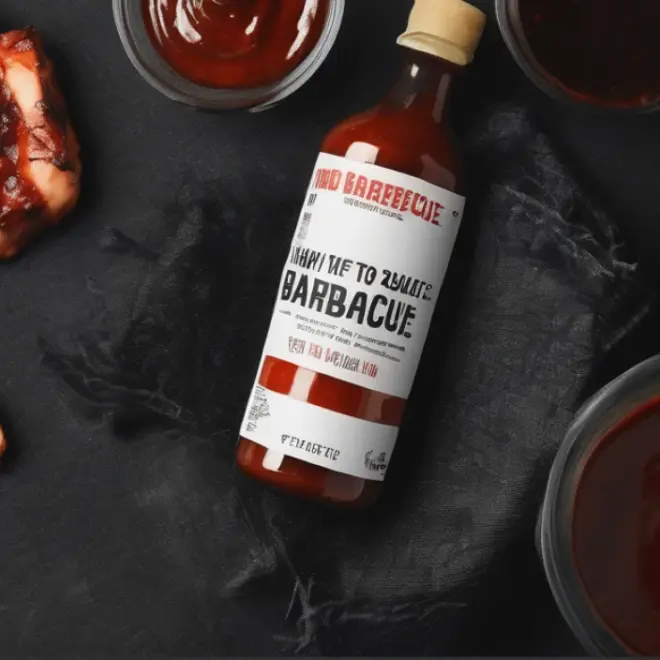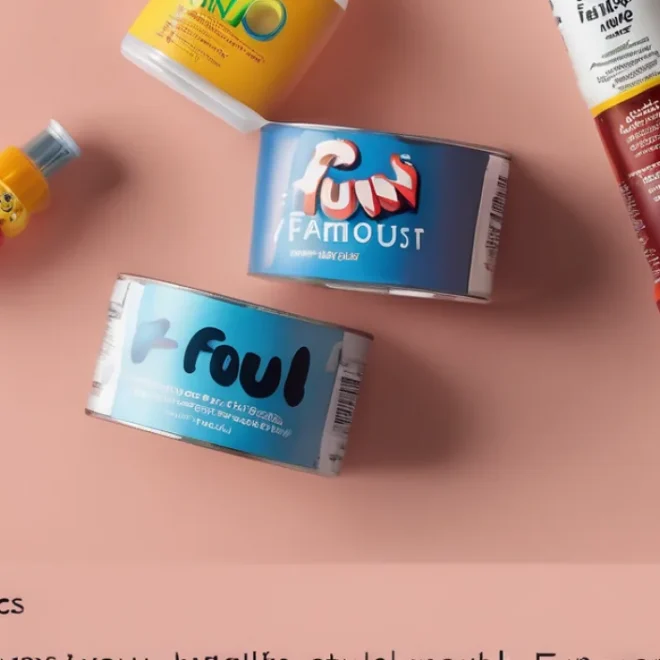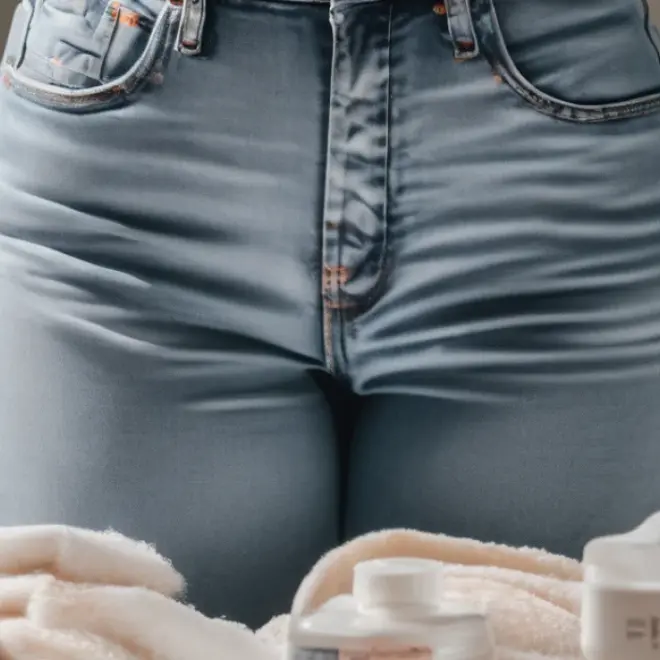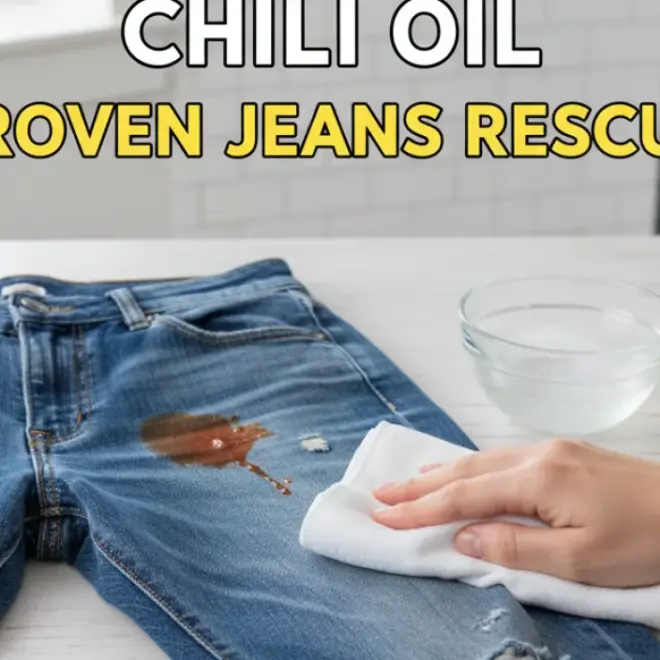Grease stains on black jeans can be tough, but they don’t have to be permanent. This guide provides simple, effective methods to lift grease stains, helping you restore your favorite denim with common household items and clear, step-by-step instructions.
Black jeans are a wardrobe staple, versatile and stylish. However, a rogue splash of cooking oil, a smudge of butter, or even a bit of salad dressing can leave behind an unwelcome greasy mark. These stains can seem daunting, especially on dark fabric where lighter grease spots can be quite noticeable. The good news is that tackling grease stains on black jeans is often easier than you might think, and you likely have the solutions already in your home. This article will walk you through the most effective, beginner-friendly methods to remove those stubborn grease spots, leaving your black jeans looking as good as new. Get ready to say goodbye to grease stains for good!
Understanding Grease Stains on Black Jeans
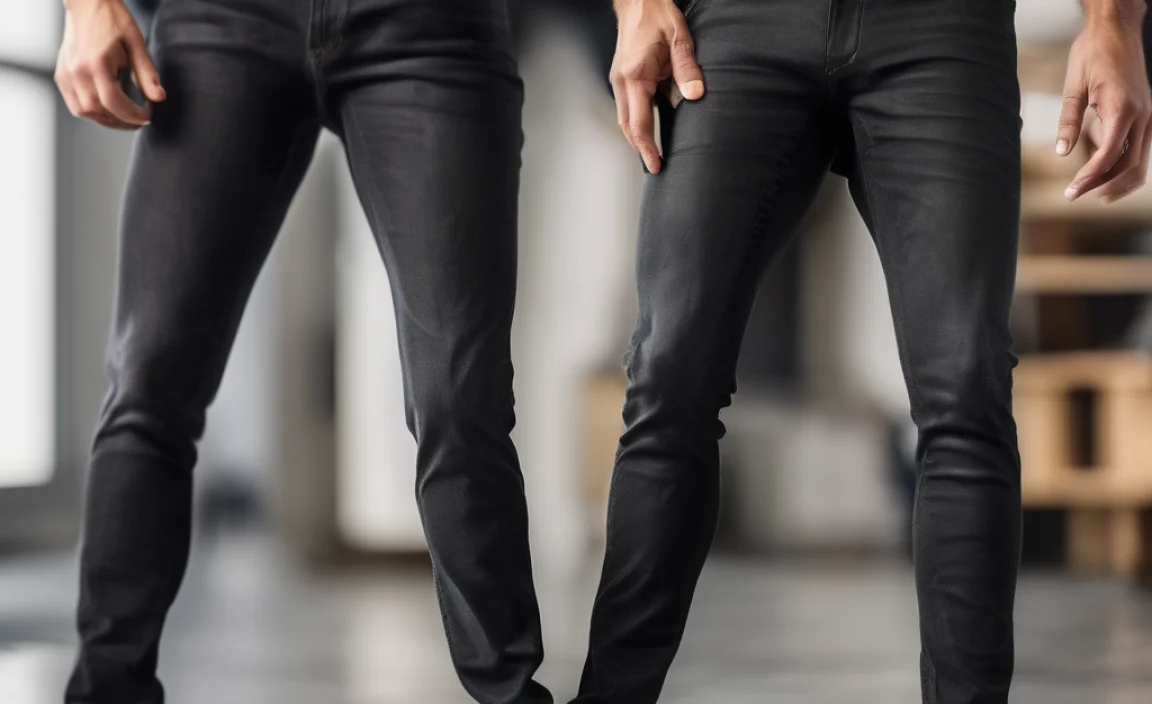
Grease and oil-based stains are common culprits when it comes to laundry mishaps. Unlike water-based stains, grease doesn’t absorb into fabric fibers easily; instead, it sits on top or penetrates, creating a translucent mark that can attract dirt and darken over time. The challenge with black jeans is that while they hide some imperfections, grease stains can still stand out as lighter or shinier patches, or they can make the fabric appear dull in that specific spot.
The key to removing grease is to break down the oil. This usually involves using a degreasing agent. For denim, especially dark washes, it’s also important to use gentle methods to avoid fading the color or damaging the fabric. Timing is also a factor; fresh stains are always easier to remove than those that have set in.
Essential Tools and Ingredients for Grease Removal

Before you dive into the stain removal process, gather these common household items. Having them ready will make the process much smoother.
- Dish Soap: A powerful degreaser, especially those formulated for cutting through kitchen grease.
- Baking Soda: An absorbent powder that can draw out grease.
- Cornstarch or Talcum Powder: Similar to baking soda, these absorb liquids and oils.
- Old Toothbrush or Soft Brush: For gently working cleaning agents into the stain.
- Clean Cloths or Paper Towels: For blotting and applying treatments.
- Cold Water: Essential for initial rinsing to prevent setting the stain.
- Laundry Detergent: Your regular detergent, preferably liquid, for the final wash.
- Optional: Stain Remover Pen or Spray: For a pre-treatment boost.
Method 1: The Dish Soap and Baking Soda Technique (Best for Fresh Stains)
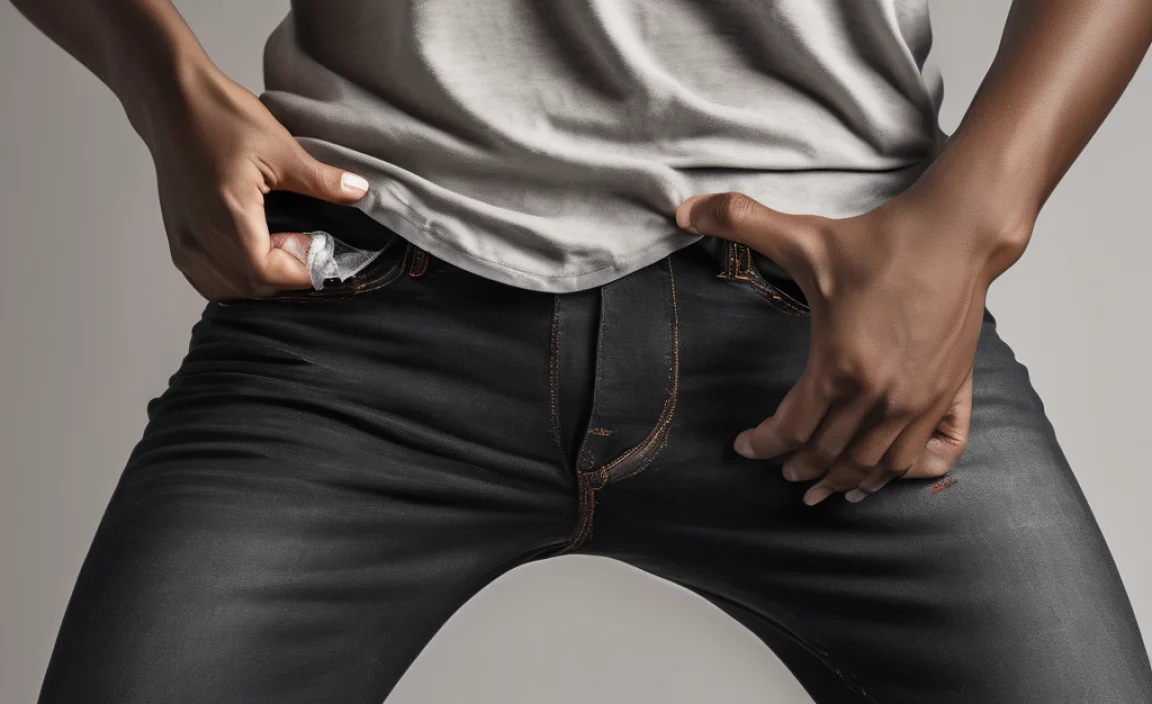
This is often the go-to method because dish soap is designed to break down grease, and baking soda helps absorb it. It’s particularly effective when tackled soon after the stain occurs.
Step-by-Step Guide:
- Blot the Excess: If the grease is still wet, gently blot away any excess with a clean paper towel or cloth. Do not rub, as this can spread the stain further into the fabric.
- Apply Dish Soap: Place the stained area face down on a clean paper towel. Apply a small amount of liquid dish soap directly onto the back of the stain. Work it in gently with your finger or a soft brush.
- Let it Sit: Allow the dish soap to sit on the stain for about 5-10 minutes. This gives it time to start breaking down the oil.
- Rinse: Rinse the area thoroughly with cold water from the back side of the stain. This helps push the grease out of the fibers, rather than further in.
- Apply Baking Soda: Once rinsed, lay the jeans flat and generously sprinkle baking soda directly onto the remaining stain.
- Create a Paste: Add a few drops of water to the baking soda to create a paste. Gently work this paste into the stain with the toothbrush or your fingers.
- Dry Naturally: Let the baking soda paste dry completely on the jeans. This can take a few hours. As it dries, it will absorb any lingering grease.
- Brush Off: Once dry, brush off the dried baking soda. You can use a dry toothbrush or a cloth.
- Check the Stain: Inspect the area. If the stain is gone, proceed to the next step. If it’s still visible, repeat steps 2-8 or try an alternative method.
- Wash as Normal (Cold Water): Wash the jeans in your washing machine on a cold water cycle with your regular laundry detergent. Do not use hot water, as heat can set grease stains.
- Air Dry: Crucially, air dry your jeans after washing. Do not put them in the dryer until you are absolutely certain the stain is gone. The heat from the dryer will permanently set any remaining grease.
Method 2: The Absorbent Powder Pre-Treatment (Great for All Stains)
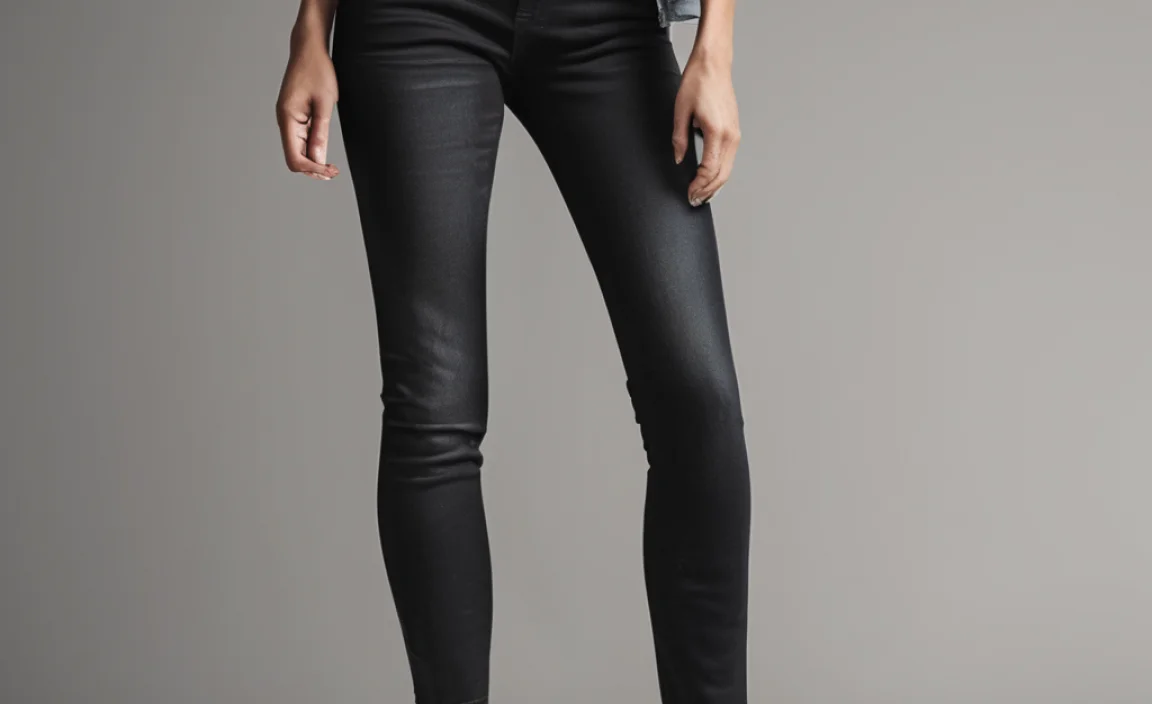
This method relies on the absorbent properties of powders like cornstarch or talcum powder to lift grease before washing. It’s a fantastic first line of defense and works well for both fresh and slightly older stains.
When to Use This Method:
- As a first step for any grease stain, especially if you’re unsure of its age.
- If you don’t have dish soap readily available.
- As a follow-up if the dish soap method didn’t completely remove the stain on its own.
Step-by-Step Guide:
- Blot Dry (if needed): If the stain is fresh and wet, gently blot away excess grease with a clean paper towel.
- Apply Absorbent Powder: Generously cover the entire grease stain with a thick layer of cornstarch, baking soda, or talcum powder. Make sure the powder extends slightly beyond the edges of the stain.
- Let it Absorb: Allow the powder to sit on the stain for at least 30 minutes, or preferably for a few hours (even overnight for stubborn stains). The powder will absorb the oil from the fabric.
- Brush Away Powder: Use a soft brush or cloth to gently brush away the powder. You should see that the powder has clumped and absorbed the grease.
- Inspect and Repeat (if necessary): Check the stained area. If a good amount of grease seems to have been lifted, you can proceed to washing. If the stain persists or looks less intense, repeat steps 2-4 with fresh powder.
- Pre-treat with Liquid Detergent: Apply a small amount of liquid laundry detergent or a stain remover spray directly to the residual stain. Gently rub it in with your fingers or a toothbrush.
- Wash in Cold Water: Launder the jeans in cold water with your usual detergent.
- Air Dry: Again, air dry the jeans completely to ensure the stain is gone before considering machine drying.
Method 3: Targeted Stain Remover Solutions

For more persistent or older grease stains, a commercial stain remover designed for grease can be highly effective. Many reputable brands offer powerful formulas that work quickly.
Recommended Stain Removers:
When choosing a stain remover, look for products specifically mentioning grease, oil, or food stains. Some highly-rated options include:
- OxiClean Laundry Stain Remover: Known for its oxygen-based cleaning power.
- Shout Advanced Gel: A popular and effective gel formula.
- Tide To Go Stain Pen: Great for on-the-go treatments, though may require follow-up washing for tough set-in stains.
Step-by-Step Guide:
- Check Product Instructions: Always read and follow the specific instructions on your chosen stain remover product.
- Pre-treat the Stain: Usually, you’ll apply the stain remover directly to the affected area. Ensure the entire stain is covered.
- Let it Dwell: Allow the product to penetrate the stain for the duration recommended by the manufacturer (typically 5-15 minutes, or longer for tougher stains).
- Gentle Rubbing (if instructed): Some removers benefit from a gentle rub with your fingers or a soft brush to help the product work into the fibers.
- Rinse (if instructions advise): Some products require rinsing the treated area before washing.
- Wash in Cold Water: Launder the jeans as you normally would, but stick to a cold water cycle.
- Check Before Drying: Inspect the jeans carefully for any remaining stain after the wash cycle.
- Air Dry: Air dry the jeans until you are 100% confident the stain is gone.
Preventing Future Grease Stains
While removing grease stains is manageable, preventing them altogether is even better. Here are a few tips to help keep your black jeans pristine:
- Wear an Apron: When cooking, especially with greasy foods, wearing an apron is your first line of defense.
- Be Mindful: Be aware of your surroundings and what you’re carrying. Avoid leaning on surfaces that might have grease or oil.
- Quick Action: If you do notice a small smudge or spot, address it immediately, even if it’s just a light dab with a damp cloth.
- Fabric Protector Sprays: For brand-new jeans or those you want to shield, consider using a fabric protector spray designed for clothing. Test it on an inconspicuous area first to ensure it doesn’t alter the color.
Understanding Fabric Care for Black Denim
Black denim, like all dark washes, requires specific care to maintain its color and integrity. Understanding these points can help you preserve your favorite jeans.
Key Considerations:
- Color Retention: Hot water and harsh detergents can strip the dye from black denim, leading to fading. Always opt for cold water when washing black items.
- Shrinkage: High heat from dryers can also cause denim to shrink. Air drying is generally the best option for maintaining the fit and preventing shrinkage.
- Fabric Integrity: Overly vigorous scrubbing or harsh chemicals can weaken denim fibers, leading to premature wear and tear, especially on seams or specific areas of the jean.
Comparison of Stain Removal Methods
Each method has its strengths. Here’s a quick comparison:
| Method | Best For | Pros | Cons |
|---|---|---|---|
| Dish Soap & Baking Soda | Fresh stains | Uses common household items, effective degreaser | Requires multiple steps, might need repetition |
| Absorbent Powder | Any stain; good first step | Simple application, good for absorbing, preserves color | May not remove deeply set stains alone, takes time to absorb |
| Targeted Stain Remover | Stubborn or old stains | Fast-acting, specifically formulated for grease | Requires purchasing a product, always check fabric safety |
Troubleshooting Stubborn Stains
What if the stain just won’t budge? Don’t despair. Here are a few more advanced tips for those really persistent grease marks:
- Repeat Applications: Sometimes, the solution is simply to patiently repeat the most effective method you’ve tried. Allow adequate drying time between attempts.
- Enzyme-Based Cleaners: For older, set-in stains, look for laundry detergents or stain removers that contain enzymes. Enzymes are brilliant at breaking down organic matter, including grease. You can find resources from organizations like the American Chemistry Council that explain how enzymes work in cleaning products.
- Rubbing Alcohol (Caution): For very tough, older stains on denim, a small amount of rubbing alcohol applied with a cotton swab can sometimes break down the grease. Use with extreme caution, as alcohol can lighten dark fabrics. Always test on an inconspicuous spot first (like an inside seam), work in a well-ventilated area, and blot rather than rub. Rinse thoroughly afterward.
- Professional Dry Cleaning: If all else fails, a professional dry cleaner has access to specialized solvents and techniques that can often remove stains that are impossible to tackle at home. Be sure to point out the stain and mention it’s a grease stain.
Frequently Asked Questions
Q1: Can I use hot water to remove grease from black jeans?
No, it’s best to avoid hot water. Hot water can set grease stains, making them much harder, if not impossible, to remove. Always use cold or lukewarm water for washing and rinsing. For more information on the impact of water temperature on laundry, you can refer to guides from entities like the EPA’s Energy Star program, which often touches on water temperatures for optimal washing.
Q2: How long does it take for baking soda to work on a grease stain?
When used as a paste, let it sit until completely dry, which can take a few hours. If used as a dry powder to absorb, leave it on for at least 30 minutes, but several hours or overnight is even better for tougher stains.
Q3: Will these methods fade my black jeans?
The methods described use gentle ingredients and cold water, which are designed to be color-safe. However, always test any cleaning solution on an inconspicuous area first, especially if using a commercial stain remover, to ensure it doesn’t affect the dye.
Q4: What if the stain is old and dried?
Older, dried stains are more challenging. Start with the absorbent powder method to lift as much as possible, then follow up with a targeted stain remover or a pre-treatment with liquid detergent. You may need to repeat the process.
Q5: Can I put my jeans in the dryer if I’m not sure the stain is completely gone?
Absolutely not. The heat from a dryer will permanently set any residual grease stain. Always air dry your jeans until you can confirm the stain is gone under good lighting.
Q6: Is dish soap safe for all types of black denim?
Yes, regular liquid dish soap is formulated to be gentle enough for most fabrics, including denim. Its primary function is to break down grease, and it’s a tried-and-true method for laundry stain removal. Start with a small amount to be safe.
Conclusion
Dealing with grease stains on your favorite black jeans might seem like a frustrating chore, but as you’ve seen, it’s a solvable problem with common household items and a little patience. By understanding how grease interacts with fabric and employing simple yet effective techniques like using dish soap, absorbent powders, or specialized stain removers, you can restore your denim to its former glory. Remember the crucial steps: act quickly on fresh stains when possible, always use cold water, and never machine dry until you’re certain the stain is vanquished. With these proven methods, you can confidently tackle grease mishaps and keep your black jeans looking sharp for every occasion.


